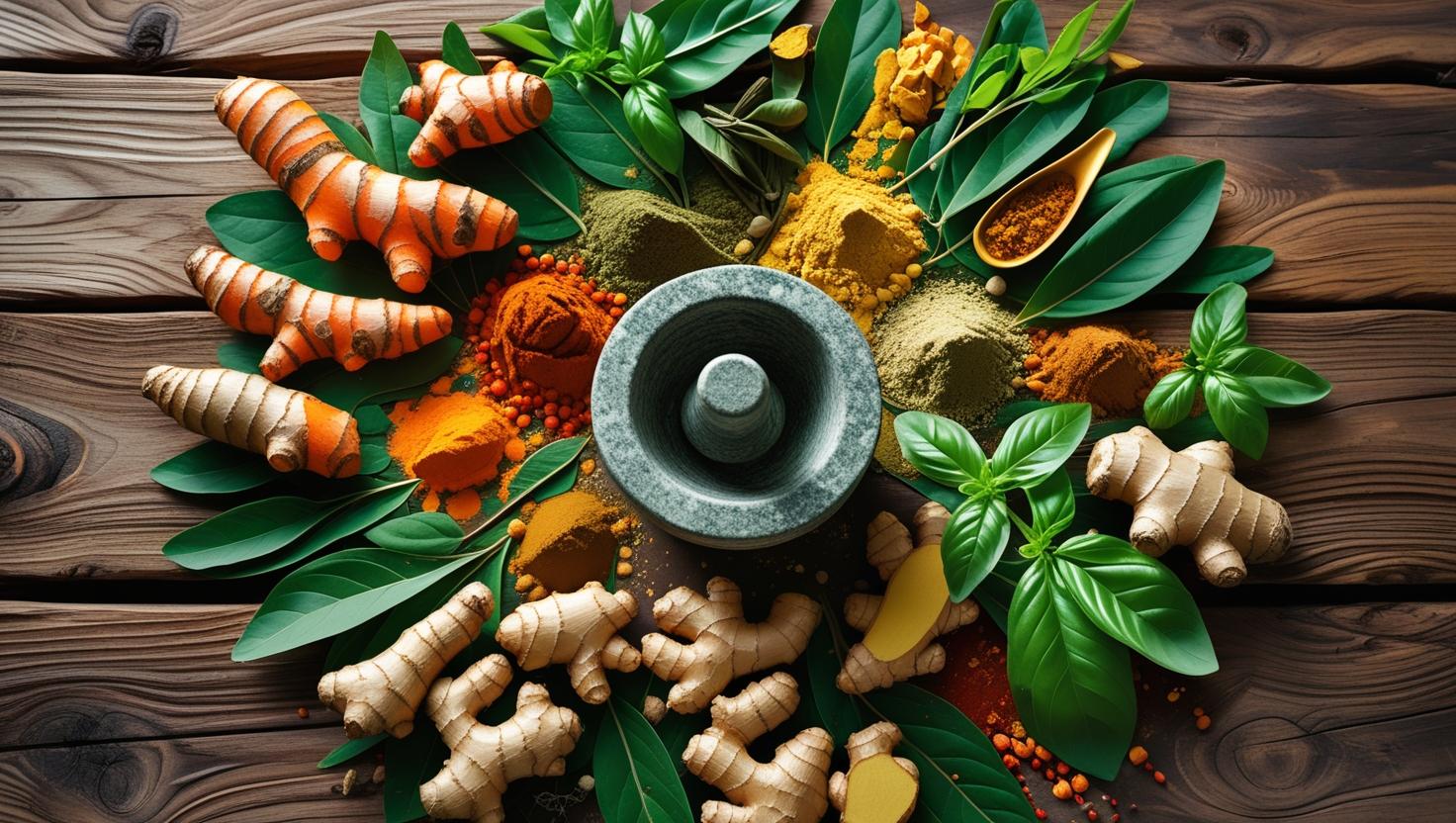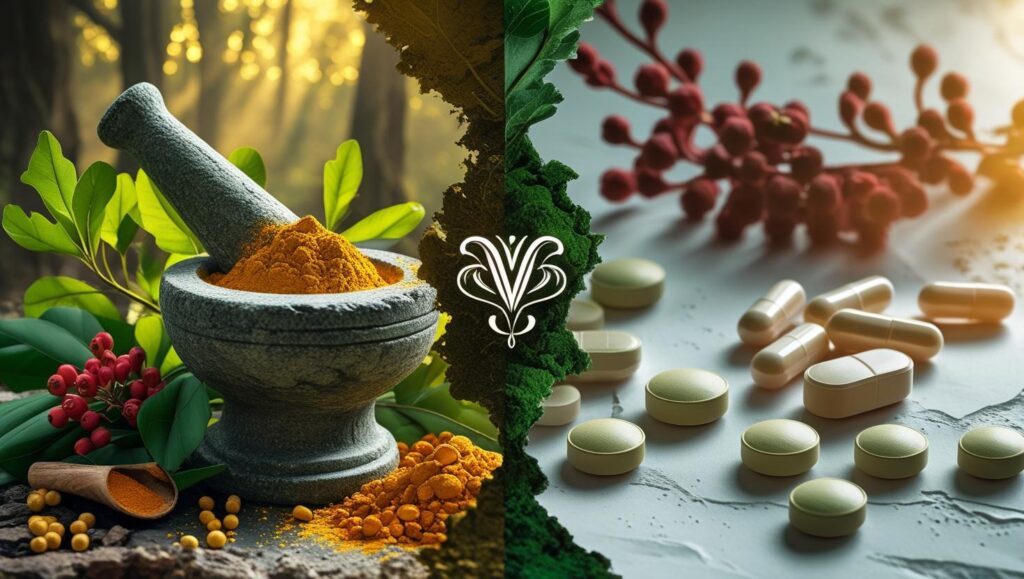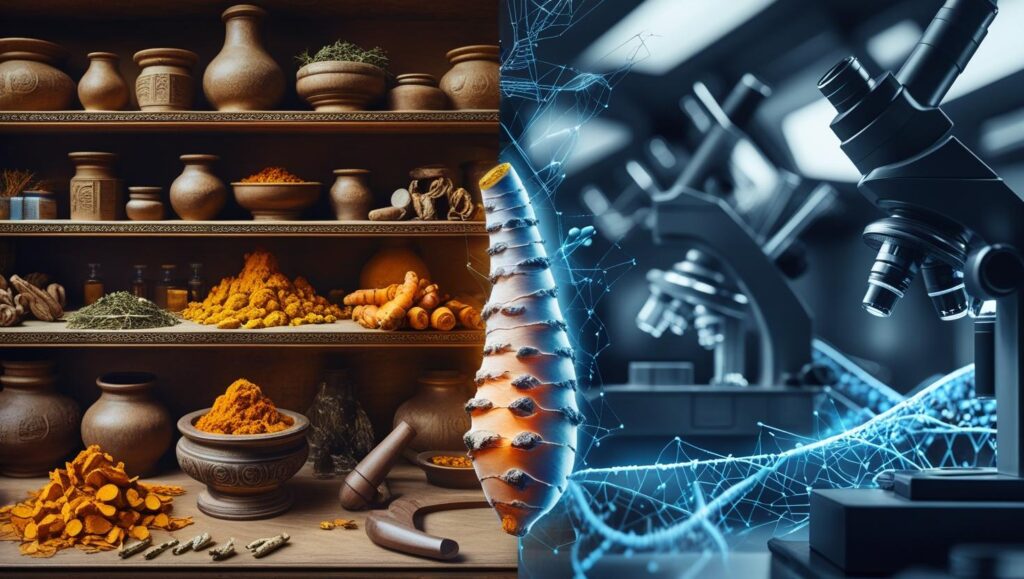Breaking News




Popular News














Enter your email address below and subscribe to our newsletter

While pharmaceutical companies spend billions developing synthetic solutions, ancient civilizations already discovered something remarkable: for every health problem plaguing modern humans, there's a plant ally waiting to heal you.
What if every health issue had a green ally quietly waiting in nature’s vast pharmacy? This question haunts me as I walk through forests and gardens, knowing that beneath my feet and around me grows an ancient intelligence that has been healing bodies and minds for millennia. Perhaps the most profound truth about our relationship with the plant kingdom isn’t what we’ve discovered about it, but what we’ve forgotten.

Long before laboratories synthesized compounds and pharmaceutical companies trademarked molecules, our ancestors lived by a simple principle: for every ailment that could afflict the human body, nature had already provided a remedy. This wasn’t wishful thinking or primitive superstition—it was practical wisdom born from thousands of years of careful observation and testing. Today, as we rediscover this botanical treasure trove, we’re learning that the ancients may have been onto something far more sophisticated than we initially understood.
High in the harsh mountain ranges of Siberia and Scandinavia grows a humble succulent that has earned the reverence of warriors, scholars, and laborers alike. Rhodiola rosea, known as “golden root” to the Vikings who carried it on long voyages, represents nature’s answer to our modern epidemic of stress and mental fatigue.
For over 3,000 years, traditional healers across Russia, Scandinavia, and Tibet have prescribed rhodiola for what we now recognize as adaptogenic properties—the plant’s remarkable ability to help the body adapt to various stressors. Modern research has validated this ancient wisdom, revealing that rhodiola contains unique compounds called rosavins and salidroside that appear to regulate the hypothalamic-pituitary-adrenal axis, our body’s primary stress response system.
Studies published in prestigious journals like Phytomedicine have shown that rhodiola can improve mental performance during periods of stress, reduce fatigue, and even enhance mood in people with mild to moderate depression. What’s particularly fascinating is that this plant seems to work as a biological thermostat—providing energy when we’re depleted and calm when we’re overstimulated.
In India’s devotional gardens, holy basil—known as Tulsi—is revered as both medicine and sacred symbol. Smoke from burning Tulsi leaves is thought to purify the air; tea brewed from its leaves has been used to relieve coughs and clear nasal passages. Recent in vitro studies show that Tulsi extracts may inhibit certain strains of respiratory viruses and soothe bronchial irritation⁹. Additionally, its adaptogenic qualities echo those of ashwagandha, with small trials indicating improvements in mood and cognitive performance under stress¹⁰. Whether steeped in tea or grown at the windowsill, holy basil invites us to inhale clarity—body, mind, and spirit.
Imagine a queasy traveler finding comfort in a small cube of crystallized ginger, or a pregnant mother breathing in the tangy steam of ginger tea. Across Africa, Asia, and Europe, ginger’s warming roots have been offered for centuries to settle unsettled stomachs. Modern studies confirm that ginger is effective against nausea of various origins—motion sickness, chemotherapy-induced nausea, and even morning sickness⁷. Its bioactives, gingerols and shogaols, seem to act on serotonin receptors in the gut and central nervous system, reducing queasiness without the drowsiness typical of many antiemetics⁸. Available in candied bites, teas, capsules, or raw slices, ginger remains a trusty digestive companion.
Dubbed the “drumstick tree” in its native India and the “miracle tree” in parts of Africa, moringa stands out not for a single bioactive compound but for its nutritional density. Leaves of moringa contain substantial protein, vitamins A and C, calcium, and iron—qualities that have made it a focal point in community nutrition programs combating malnutrition⁵. Beyond vitamins, moringa leaf extracts exhibit high antioxidant activity in laboratory assays, scavenging free radicals that contribute to cellular aging⁶. In rural villages, women’s cooperatives crush fresh leaves into porridge or dry them into powder, weaving moringa into daily rituals that bolster both body and economy.
In the hedgerows of Europe, a thorny shrub has been quietly tending to human hearts for over two millennia. Hawthorn (Crataegus species) carries with it a folklore as rich as its medicinal properties. Medieval monks called it “the heart of the hedgerow,” and modern cardiologists are beginning to understand why.
Traditional European herbalists prescribed hawthorn flowers, leaves, and berries for what they termed “weakness of the heart”—not just the physical organ, but the emotional center of human experience. They observed that people who consumed hawthorn seemed more emotionally resilient and physically vital.
Contemporary research has revealed that hawthorn contains a complex of bioflavonoids, particularly oligomeric proanthocyanidins, that support cardiovascular health in multiple ways. Clinical trials have demonstrated that hawthorn can improve heart function in people with mild heart failure, enhance circulation, and help regulate blood pressure. The German Commission E, Europe’s equivalent to the FDA for herbal medicines, has officially recognized hawthorn as a treatment for heart conditions.
Standing in temple courtyards across Asia are trees that have witnessed the rise and fall of civilizations. Some individual ginkgo trees are over 1,000 years old, their fan-shaped leaves remaining virtually unchanged from fossils dating back 270 million years. Perhaps it’s poetic justice that this ancient survivor has become our ally in preserving one of humanity’s most precious faculties: memory.
Traditional Chinese medicine has used ginkgo leaves for over 5,000 years to support cognitive function and circulation. Ancient texts describe it as a remedy for “forgetfulness and confusion in old age.” Modern neuroscience has begun to unravel the mechanisms behind these observations, discovering that ginkgo’s unique compounds—including ginkgolides and bilobalide—can improve blood flow to the brain and protect neurons from oxidative damage.
While research on ginkgo’s effectiveness for dementia remains mixed, studies consistently show improvements in attention, processing speed, and memory in healthy adults. The European Medicines Agency has approved standardized ginkgo extracts for treating cognitive impairment and poor circulation.
In the markets of India, golden root segments have been ground into powder for over 4,000 years, creating one of the most revered spices in human history. Turmeric (Curcuma longa) holds a place of honor in Ayurvedic medicine as a universal healer, traditionally used for everything from wounds to digestive troubles to joint pain.
The active compound responsible for turmeric’s therapeutic properties—curcumin—has become one of the most studied plant compounds in modern medicine. Over 12,000 peer-reviewed papers have explored its anti-inflammatory, antioxidant, and potentially anti-cancer properties. What ancient healers knew intuitively—that chronic inflammation underlies many diseases—modern science has confirmed, and turmeric appears to be nature’s most potent anti-inflammatory agent.
Clinical trials have shown that curcumin can be as effective as some pharmaceutical anti-inflammatory drugs for conditions like rheumatoid arthritis, but without the side effects. Its ability to cross the blood-brain barrier has sparked intense research into its potential for preventing neurodegenerative diseases.
One of the most dangerous misconceptions about plant medicine is the assumption that because something is natural, it must be harmless. This romantic notion has led countless people to experiment with herbs without proper knowledge or guidance, sometimes with serious consequences.
The truth is that plants are chemical factories, producing compounds that can be every bit as potent—and potentially dangerous—as pharmaceutical drugs. Consider that many of our most powerful medicines originated from plants: aspirin from willow bark, digitalis from foxglove, morphine from opium poppies. These same plants that heal can also harm when used improperly.
Comfrey, once popular as a healing herb, contains pyrrolizidine alkaloids that can cause severe liver damage. St. John’s wort, effective for mild depression, can interfere with numerous medications including birth control pills and blood thinners. The key lies not in avoiding plant medicine, but in approaching it with the same respect and caution we would apply to any powerful healing tool.
Our consumer culture has trained us to believe that if a little is good, more must be better. This thinking becomes particularly dangerous when applied to plant medicine, where the difference between therapeutic and toxic doses can be surprisingly narrow.
Traditional herbalists understood this principle intimately. They spoke of plants having personalities and temperaments, requiring careful observation and gradual introduction. Modern phytotherapy (plant-based medicine) has validated this wisdom, showing that many plant compounds exhibit what’s called a “biphasic response”—low doses provide beneficial effects, while high doses can be neutral or even harmful.
Take ginseng, for example. Small, consistent doses over time can enhance energy and resilience, but large doses can cause anxiety, insomnia, and elevated blood pressure. The ancient principle of “start low and go slow” remains the gold standard for herbal medicine.
While traditional knowledge systems contain profound wisdom, we must resist the urge to romanticize every historical use of plants. Some traditional applications were based on limited understanding or symbolic thinking rather than genuine therapeutic effects.
The “Doctrine of Signatures,” popular in medieval Europe, suggested that plants resembled the body parts they could heal—walnuts for the brain, red plants for blood disorders. While occasionally this led to genuine discoveries, it was more often misleading.
The truth is that traditional knowledge becomes most powerful when combined with modern scientific validation. The marriage of ancient wisdom and contemporary research has given us some of our most effective plant-based medicines, from echinacea for immune support to saw palmetto for prostate health.

As I reflect on these plant allies and the myths that surround them, I’m struck by a profound realization: we haven’t so much discovered the healing power of plants as we’ve remembered it. For the vast majority of human history, we lived in intimate relationship with the plant world, understanding its rhythms, respecting its power, and drawing from its wisdom.
The “One Plant for One Health” principle suggests something beautiful about the interconnectedness of life on Earth. Perhaps the same evolutionary pressures that shaped human physiology also guided plants in developing compounds that could support our health. We evolved together, after all, sharing the same environment, breathing the same air, drinking from the same waters.
This doesn’t mean we should abandon modern medicine in favor of plant remedies, but rather that we might benefit from a more integrative approach—one that honors both the precision of contemporary science and the wisdom of traditional plant knowledge. When we view plants not as crude drugs to be replaced by synthetic alternatives, but as sophisticated allies in health and healing, we open ourselves to possibilities that neither modern medicine nor traditional herbalism could achieve alone.
Consider taking a moment to explore the plant life in your own environment. What grows wild in your region? What did the indigenous peoples of your area use for medicine? What plants have you dismissed as weeds that might actually be allies? Sometimes the most profound healing begins not with exotic herbs from distant lands, but with the green teachers growing quietly in our own backyards.
The next time you encounter a plant—whether it’s the dandelions pushing through sidewalk cracks or the mighty oak shading your path—remember that you’re in the presence of an ancient intelligence, one that has been crafting molecules and perfecting healing strategies for millions of years longer than humans have existed. In honoring this wisdom, we don’t just improve our health; we remember what it means to be truly alive on this green planet.